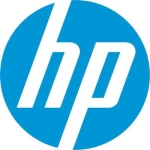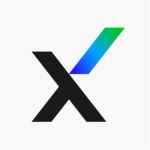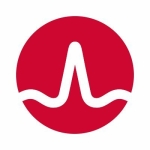We protect our client's desktops, laptops, and other devices. The servers will be protected by cloud and workload security. It's a complete end-to-end inter-security solution.
The solution provides our customers with malware protection. It has a good level of malware protection to protect against malicious threats. It provides protection against a good number of threats, both known and unknown, and we do get more details to help us log and investigate.
We like that we can catch any malicious threats. We have device and application control. We have more features when we complete office scans.
The device and application control are quite valuable. If users use USB sticks, they can potentially infect devices. We have a list of approved corporate policies, and certain things can not be let through to the endpoints. It helps keep companies safe.
We have protection from malware and ransomware. We get notifications from the console and can take action if we see any malicious activity.
One Endpoint Security has advanced protection capabilities that adapt to protect against unknown threats. It can protect clients from both known and unknown threats via machine learning. This is critical. We can't always expect certain attacks. Some threats may be very new. And clients are still protected. It can protect against behavior monitoring, for example, via machine learning.
One Endpoint Security detects ransomware with runtime machine-learning capabilities. This is important. Clients need to know whether a program is trying to encrypt their files and, if so, if it's legitimate or malicious. It gives good protection to our customers to ensure their security is not violated.
One Endpoint Security provides our customers with a single console for cross-layer detection, threat hunting, and investigation. We depend on the Vision One console. With One Endpoint Security, we do have two consoles. There's one for managing policies and one for agent management. We used to have the central manager console, however, now we are using OPEX Central for policy management. On the other console, there is for agent management, threat hunting, and other remediation. Soon we'll have one console again that will centralize everything, including alerts, actions, auto-response, and remediation.
There are options to integrate with other products. However, we may not use any integrations. Any logs generated get passed to the SOC team. They get logs from Splunk also and centralize the management of logs. However, my understanding is that everything can be integrated.
It's easy to learn One Endpoint Security. It does have user-friendly interfaces.
The Trend Micro portal allows you to access documentation and manuals. It shows you, for example, how it can be configured and how to use certain features. We refer to the guidelines and articles a lot.
There hasn't been any issue with administering the solution.
Once we implemented the solution, we immediately witnessed security benefits.
We've noted a reduction in issues as we have increased transparency, and we do have more control. Based on that, we can easily modify policies, have better control over enrollment, and have better visibility into infection threats and how issues may enter systems. We reduced the number of infections and the number of hosts getting infected. We've seen a 10% to 15% drop in threats.
We are using One Endpoint Security as a Service. We do find that having endpoint deployment in the cloud is reducing people's workloads. The setup files can be downloaded so long as there is internet connectivity. We can do both online and offline installations now. With client enrollments spread across multiple locations, it may not be feasible for the IT team to be onsite to do deployments. It's much easier to have everything done online and this approach reduces a lot of work for the IT team (including traveling to locations, et cetera). Travel logistics can be completely avoided. We've likely saved more than 50% of our time having online deployments.
It's also reduced administrative overhead. Many reports, for example, are now automated and sent directly to country administrators. We've saved around 50% of administrative overhead using One Endpoint Security.
We use Trend Micro's managed XDR services in conjunction with One Endpoint Security. We get a lot of risk alerts and detailed information about events, including which endpoints were involved in which particular threats. We can get a lot of information directly from the XDR console. It's one of the best places to find more information about threats. We do threat hunting and management through the XDR console.
The solution does not have virtual patching.
The role-based access control needs improvement. We have 40 countries in our environment. We do provide admin access to the countries and cities. A French admin may administrate endpoints in Germany, which is why we need better role-based controls.
We've used the solution for our clients for more than seven or eight years.
The solution is very stable. Even when it's offline, it's not completely dependent on the cloud due to the agent. That way, you can protect your device even without the internet. And when you are connected, you have the SmartScan protection as well.
We have One Endpoint Security deployed across 40 countries and around 40,000 endpoints.
We started deploying with 1,000 or 2,00 devices and now we have tens of thousands. It has good scalability.
We may add more endpoints and increase usage.
Technical support is good. Sometimes there may be issues, and we can send them across to Trend Micro's technical team to investigate. From time to time we'll get troubleshooting recommendations from them.
I've previously worked with Symantec and McAfee. This is my third solution. I find Trend Micro to be very user-friendly. Everything is integrated under one solution. It's a host-based intrusion prevention system by default and we get protection of all four endpoints with it.
We previously only used free business services such as lightweight protection and OfficeScan.
The initial deployment of One Endpoint Security was straightforward. We have done both online and offline installations. If a local IT can deploy it they will. If not, it can be done online. The installation of the agent is very easy. If an agent is corrupted, we can use a tool to remove it and install the latest version of a new agent. It's very flexible in that sense. With other products, if an agent is corrupted, it's very hard to remove from the system. Here, it's very easy. You can just remove it and reinstall the agent package.
With good internet connectivity, you can deploy the solution in 30 to 40 minutes. It's very fast.
We'll download the MSA package from the console. That'll be given to the IT team, and what they do is push from the SCCM console. Once the systems are online, then they can push it to those systems. It can be done in silent mode without the knowledge of the user.
We have three people handling the deployment, and they are working with nearly 40,000 endpoints. Whoever handles implementation needs to have a good understanding of the endpoint protection software and its requirements and basic knowledge about the antivirus policies, as the policies may need to be altered or changed based on the country's requirements. Sometimes you need to have a scan exclusion and whitelist certain applications or URLs.
As a cloud solution, it doesn't require maintenance.
We have seen ROI reflected in the good protection we're getting on endpoints.
The pricing is moderate. It's affordable. The costs are variable. You have the flexibility to choose between different options.
We evaluated Windows Defender and Symantec. Trend Micro surpassed all other options.
We are an MSP, a managed service provider. We provide malware and security solutions.
I'd rate the solution nine out of ten. It can protect desktops, laptops, and most other devices. I'd recommend it to others. It offers very good protection. You can scale it, and it offers many good features.



















